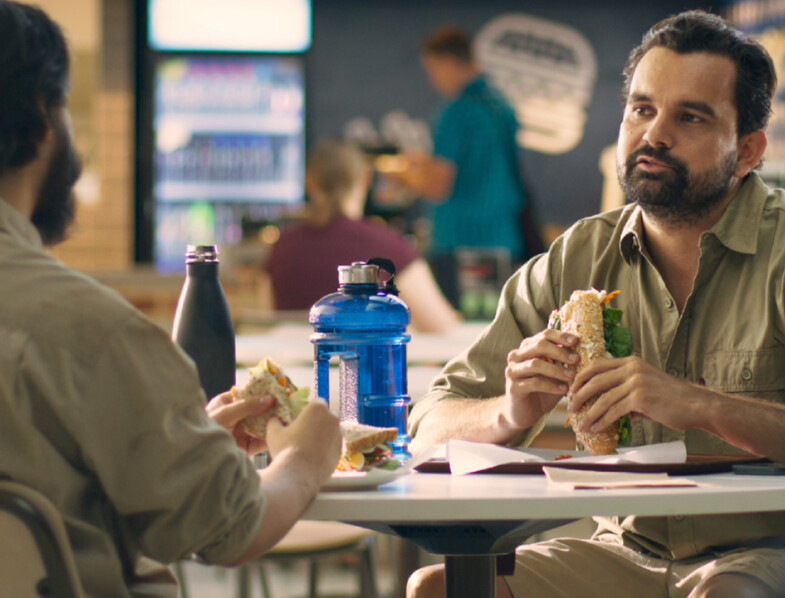This time last year, Cancer Council WA’s LiveLighter team launched a brand-new campaign, Reverse. The third wave of this campaign will air on Sunday 17 September and run until Saturday 25 November 2023. The Reverse campaign aims to increase people’s knowledge of the link between junk food and drink and cancer risk. The campaign also encourages people to find healthier options when choosing what to eat and drink, in and out of the home.
Three creative executions were developed for this campaign; ‘meals’, ‘snacks’, and ‘drinks’. The ‘meals’ and ‘drinks’ creatives will be used throughout wave three. ‘Meals’ features two tradies eating a junk food meal and ‘drinks’ features two friends drinking sugary drinks.
While more than eight out of ten Western Australian adults are aware that carrying excess body fat is a risk factor for type 2 diabetes and heart disease, as few as six in ten are aware that this is also a risk factor for cancer.
Having a higher body weight is a leading preventable risk factor for cancer and it is our duty to inform the community of this and support individuals to lead healthier lives. The ad links junk food and sugary drink consumption with excess body fat and an increased risk of cancer due to being overweight or obese.
The main premise of Reverse is that it begins inside the body, and only shows the food products and person eating them at the conclusion of the ad, ‘reversing’ the usual sequence of similar behavioural change TV commercials.
Beginning inside the body, the Reverse ad shows internal organs with toxic fat and cancer growth. The camera then travels up through the oesophagus and out of the mouth, revealing people eating junk foods or drinking sugary drinks. Alternate versions of the ads show the camera leaving the mouth with healthy options being consumed instead. This includes a salad-packed roll instead of a fast food burger, water instead of a sugary drink, or fruit salad instead of a muffin.
The internal body footage shown in the TV ad is computer generated imagery (CGI) created by a specialist video effects company. A local Western Australian gastrointestinal surgeon was consulted during production to ensure the imagery was a realistic representation of what stomach cancer can look like.
The campaign will run state-wide across TV, shopping centres and digital.
For more information:
- Read more about the campaign.
